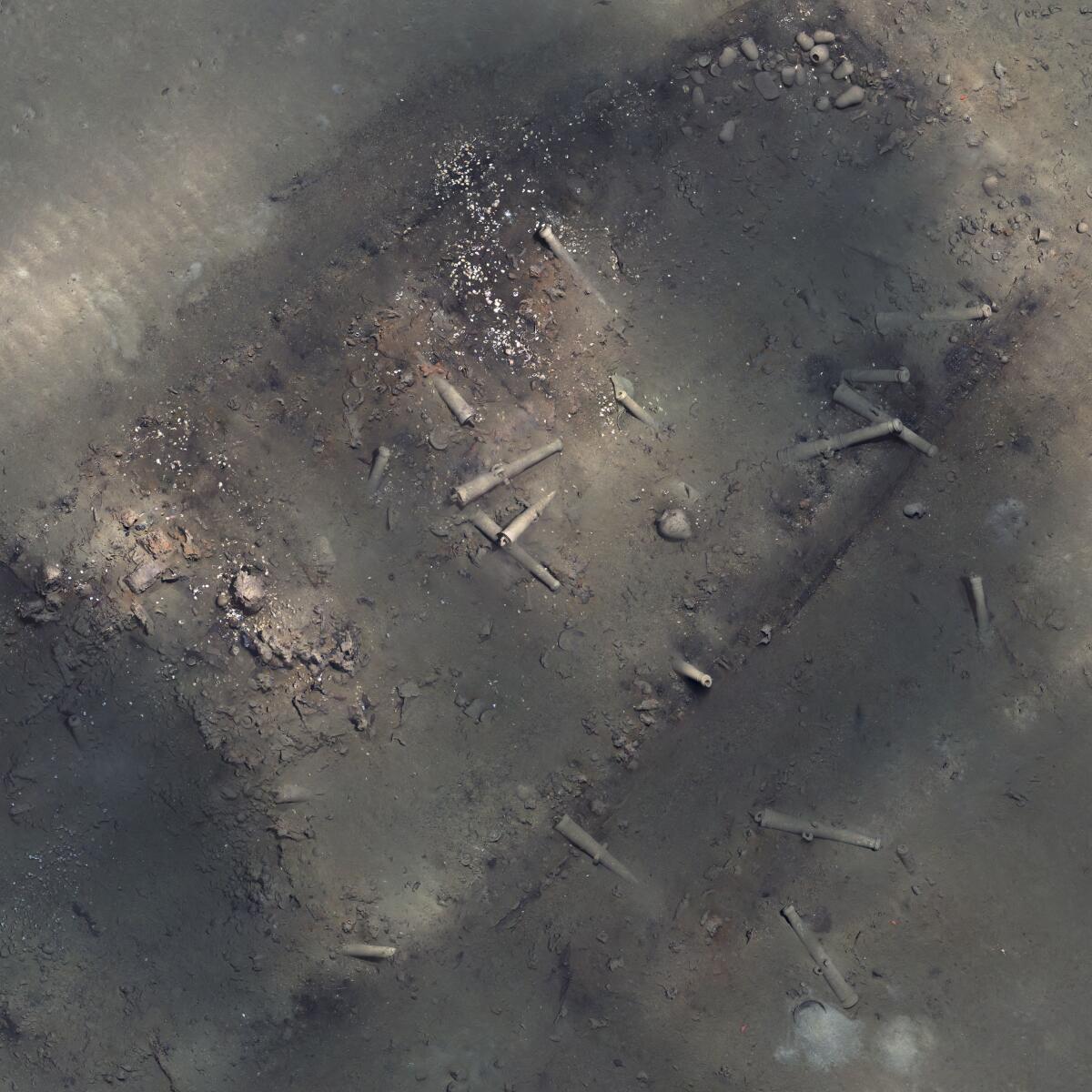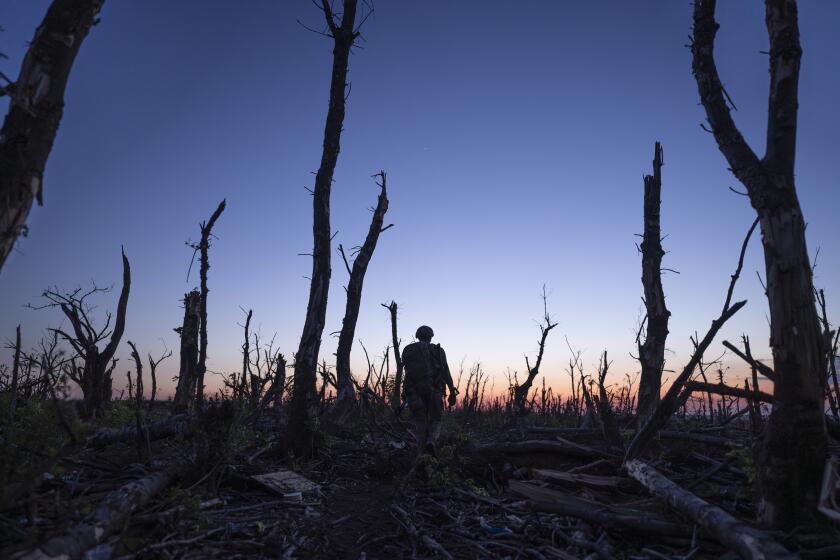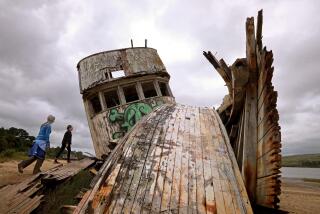Colombia will try to raise objects from a 1708 shipwreck believed to have a cargo worth billions

- Share via
BOGOTA, Colombia — The Colombian government says it will try to raise objects from the 1708 shipwreck of the galleon San Jose, which is believed to contain a cargo worth billions of dollars.
The 300-year-old wreck, often called the “holy grail of shipwrecks,” has been controversial, because it is both an archaeological and economic treasure.
Culture Minister Juan David Correa said Thursday that the first attempts will be made between April and May, depending on ocean conditions in the Caribbean. Correa pledged it would be a scientific expedition.
“This is an archaeological wreck, not a treasure,” Correa said following a meeting with President Gustavo Petro. “This is an opportunity for us to become a country at the forefront of underwater archaeological research.”
But the ship is believed to hold 11 million gold and silver coins, emeralds and other precious cargo from Spanish-controlled colonies, which could be worth billions of dollars if ever recovered.
Correa said the material extracted from the wreck, probably by robotic or submersible craft, would be taken aboard a navy ship for analysis. Based on the results, a second effort might be scheduled.
The San Jose galleon sank in battle with British ships more than 300 years ago. It was located in 2015 but has been mired in legal and diplomatic disputes.
The year started with high hopes for Ukrainian troops planning a counteroffensive against Russia but ends with anxiety over aid from allies.
In 2018, the Colombia government abandoned plans to excavate the wreck, amid disputes with a private firm that claims some salvage rights based on a 1980s agreement with the Colombian government.
In 2018, the United Nations cultural agency called on Colombia not to commercially exploit the wreck.
A UNESCO experts’ body protecting underwater cultural heritage sent a letter to Colombia expressing concern that recovering the treasure for sale rather than for its historical value “would cause the irretrievable loss of significant heritage.”
“Allowing the commercial exploitation of Colombia’s cultural heritage goes against the best scientific standards and international ethical principles as laid down especially in the UNESCO Underwater Cultural Heritage Convention,” the letter said.
Colombia has not signed the U.N. Convention on the Law of the Sea, which would subject it to international standards and require it to inform UNESCO of its plans for the wreck.
The wreck was discovered three years ago with the help of an international team of experts and autonomous underwater vehicles, and its exact location is a state secret. The ship sank somewhere in the wide area off Colombia’s Baru peninsula, south of Cartagena, in the Caribbean Sea.
The ship has been the subject of a legal battle in the U.S., Colombia and Spain over who owns the rights to the sunken treasure.
The three-decked San Jose was reportedly 150 feet long, with a beam of 45 feet and armed with 64 guns.
Colombia has said that researchers found bronze cannons that are in good condition, along with ceramic and porcelain vases and personal weapons.
The researchers say that the specifications of the cannons leave no doubt that the wreck is that of the San Jose.
More to Read
Sign up for Essential California
The most important California stories and recommendations in your inbox every morning.
You may occasionally receive promotional content from the Los Angeles Times.











